Home »
Misc »
How to warm up before a basketball game
How to warm up before a basketball game
Avoid These Game-Day Warm Up Mistakes That Could Cause You To Lose Games!
Learn how to consistently surprise and pounce on your opponents with quick 4 to 8 point leads. At the same time, develop injury resistant players who can jump out of the gym and move quickly.
If you do the traditional lay up and shooting lines, do stretching on the basketball court, and don't use drills with defenders in your warm ups, there are some big changes you want to make. These changes can have a dramatic impact on your season and possibly even your coaching career.
Check out the tips below...
1 - Prepare the body to move before you step on the court to reduce injuries, improve quickness, and develop better jumpers.
You should dedicate at least 15 to 20 minutes to prepare your body to move before you step on the court.
However, I often see players doing movement preparation exercises on the basketball court during their allotted warm up time.![]() This is a complete waste of time. This can easily be done elsewhere like in the hallway, locker room, any other space.
This is a complete waste of time. This can easily be done elsewhere like in the hallway, locker room, any other space.
All of your court time during the warm up should be dedicated to basketball drills. Drills that get you ready to play.
Additionally, a well-designed movement preparation program should:
- Reduce injuries which will result in more wins - You can't improve if your players are hurt. Actually, most recovery time is spent just getting back to where you were before the injury.
- Develop better athletes - If your warm up isn't improving balance, coordination, speed, jumping, and other athletic qualities, you need to modify your warm up.
Sample Of Movement Preparation & Athletic Development Exercises
Diving into the details of a proper movement preparation would make this article far too long. I've modeled the first part of my warm up after Vern Gambetta's and Gary Gray's teachings.
Here is a quick sample (emphasis on the sample). There are variations, regressions, and progressions.
- 2 Minutes Warm Up - Jump Rope
- Leg Swings - Forward and Back, Side to Side
- Reaches - Alternate up, Alternate up and over, Alternate rotating
- Minibands - Sidestep, Walk forwards and backwards, carioca, monster walk
- Single leg squat - forward and side
- Balance exercises - Step or do a little jump, then hold position.
- Lunge and reach - Lunge forward, lunge to the side, lunge rotationally backwards. And do these three reaches for each lunge. Reach up, reach down (touch toes), reach opposite (twist).
- Jackknife Crawl
- Hurdle walk - Sideways over and under (Might need to use imagination if you don't have hurdles.)
- Quick skip
- Lateral skip
- Side step with arm swing
- Carioca - long and low
- Backwards to forward run
- Forwards to backward run
Then I add basketball specific movements to the tail end of it. .. pivoting, jump stops, hip turns, shuffles, and different jumping variations.
.. pivoting, jump stops, hip turns, shuffles, and different jumping variations.
A little tip for practices: I also take this same approach with practices. If my court time starts at 6:00 PM, I will start practice anywhere between 5:30 PM and 5:40 PM.
2 - Use court time to wake up the brain, improve decision-making, and shock the competition at the beginning of the game.
From watching thousands of games at the youth and high school level, I can tell you that very few teams do what I'm about to tell you. From a competitive standpoint, this is awesome for you and me.
While the first part of a great warm up is to prepare the body to move, you also need to wake up your brain! Just going through two line lay up drills or the same shooting drills that you see in every gym is not going to accomplish this.
Your players need to be ready to make game decisions quickly from the opening tip. So you need to do plenty of drills with live defenders.
That way, there isn't a mental warm up period at the beginning of the game that turns into a huge disadvantage for you.
And if your opponents are like most of the teams I've seen, it will give you an edge at the beginning of every game. Even if you only get an advantage of two points per game, this can still have a big impact on your season.
Additionally, your team could spend an additional 10 to 20 hours each season of getting more high-intensity practice time. Tiny little improvements for each game can lead to big improvements over time.
Sample Of Warm Up On The Court
So I will do some of these drills that are based on my philosophies and system. Here is my outline:
Note: I do not do all of these drills in one warm up. These are just examples.
High-rep shooting drills - These do not include defenders, but I still think they are important at the beginning of a warm up.
1v1, 2v1, 2v2 Drills
- 1v1 close out drills
- 1v1 finishing drills
- Dribble attack drills with 1v1 and 2v1 (with second defender trailing)
Mini scrimmages - I typically pick a couple of constraints with 3v3, 4v4, or 5v5 depending on my situation. Here are a few examples:
Here are a few examples:
- No dribble - (3v3, 4v4, or 5v5)
- Lay Ups Only for first 10 passes
- 2 post touches before a jump shot
- 2 dribble limit on each catch
- Cut throat
- Overload Defense Drill - (4v3 or 5v4)
If I'm limited on time, I will just go straight to mini scrimmages. I will try to do as much basketball skill work off the court.
If your team comes out lethargic even after doing this, another tactic is to full court press for the first few possessions.
3 - Use non-court time to warm up basketball skills
You can have your players kneel and shoot against a wall. You can have them do pound dribbles. You can do constrained one on one drills. Basically, do anything in your space that will help you warm up your basketball skills before you get on the court.
As mentioned before, it's important that you use most of your court time to get the brain ready to make good decisions on the floor.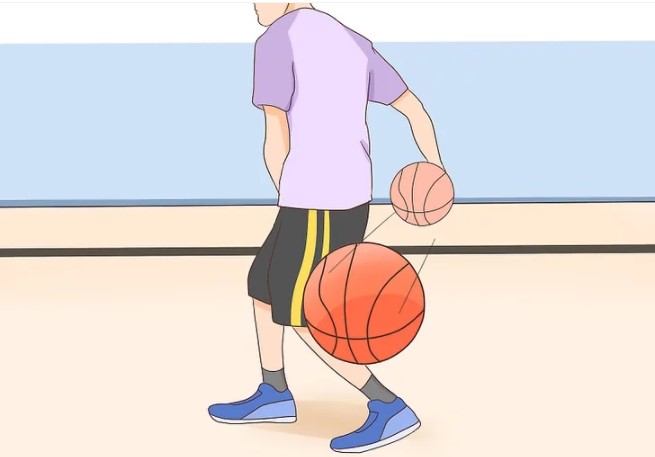
So you might need 30 minutes to prepare the body to move and do basic skill warm ups prior to the game. If you want, you can even spend more time.
4 - Incorporate shootarounds
If you have the option, use your facilities for shootarounds on game day. Even if it's a few hours before the game, getting 100 shots up in 15 to 30 minutes will help prepare your players to shoot in the game. Your players will need less time to find their shooting rhythm during the warm up.
Additionally, doing this 20 to 30 times throughout the year may result in residual improvements in shooting that can make a big difference.
On a side note, I almost added a fifth tip that has to do with mentality, but I'm still looking into this. Hopefully, I have some really cool new information in a future newsletter that could have a big impact on reducing anxiety and improving game performance.
So an ideal structure for your warm ups would be:
Earlier in the day - Shootaround for 30 minutes
30 minutes prior to court time - Movement preparation
10 minutes prior to court time - Basketball skill work
Court time - Game-like drills
A note for tournament settings:
If you play two or three games a day, my first warm up of the day will be the "long warm up" as mentioned above.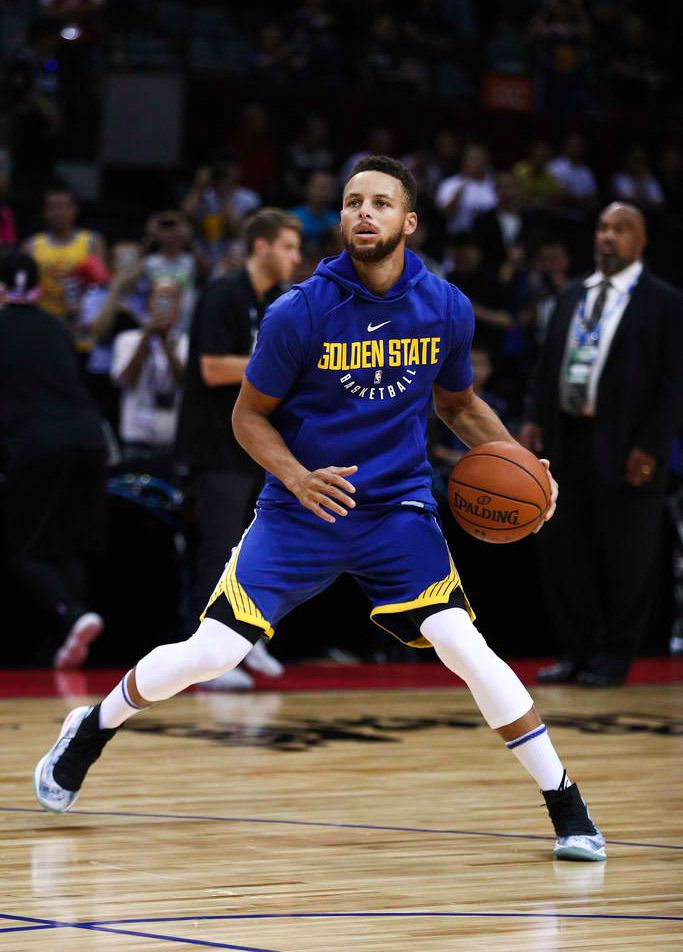
After that the warm ups are much shorter, I will just take 5 to 10 minutes to do running movements before each game. Carioca, Backwards to forward run, forward to backwards run, jumping exercises, then basketball specific movements.
Stretching?
I'm not a big fan of static stretching before practices and games. However, you might do this afterward.
If you have a tight area, you may do some massage work like foam rolling and light stretching prior to the warm up.
However, I would not hold a stretch for more than 10 seconds. The longer you hold stretches, the more it relaxes your body. Instead, you need your body activated and ready to move.
Well, I hope that these changes to your warm up will help you and your team.
What do you think? Let us know by leaving your comments, suggestions, and questions...
How to Warm Up to Play Basketball With 9 Lower Body Stretches
Spend your spare time shooting hoops with pals? Star of your local park court? Or maybe you just like working on your layups outside in the driveway? Whatever the case, you should warm up before you get ready to play ball.-Step-5.jpg/aid43486-v4-728px-Play-21-(Basketball)-Step-5.jpg)
This 10-minute warmup from physical therapist Daniel Giordano, DPT, PT, C.S.C.S will get you prepped to play before you start dribbling. In this episode of “The Fix,” we’re going to walk you through a quick pick-up basketball warmup.
Check out the video for a demonstration of all nine exercises, and for an in-depth explanation and tips for doing each one with proper form.
Hip Opener
Standing in place, bring the knee up, open out, come down, and repeat. Do five to eight of these on each side or about 30 seconds. The point? “Prepping our hips so that we’re reducing our risk of injury while we're on the court.”
Quad Folds and Single-Leg Deadlift
Grab one ankle with your hand on the same side, and then reach out with your other hand and dip downwards until you touch the floor with your palm. This will help you jump higher and perform at your optimal level on the court.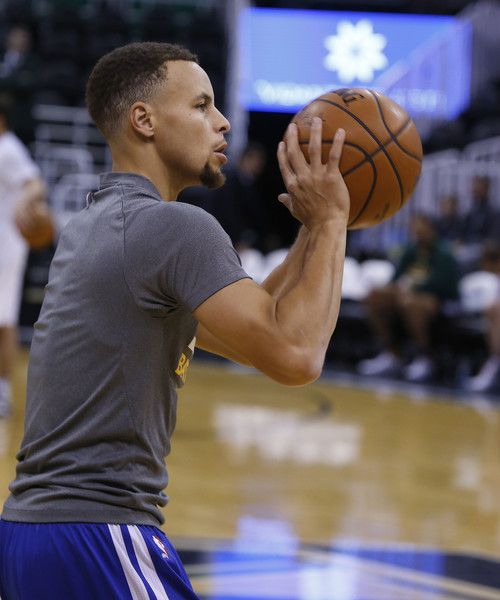 Again, do five to eight of these on each side or about 30 seconds.
Again, do five to eight of these on each side or about 30 seconds.
Staggered Stance Toe Touch
This one is for your hamstrings, or rather, to help you avoid pulling your hamstring when things get heated on the court. Keep one leg straight, the other knee bent, then hinge from the hips, touch the toes, come up, and switch sides. Like the others, do five to eight of these on each side or about 30 seconds.
Side-Lunge Adductor Stretch
Also known as an inner grind lunge stretch, get your knees wide, bend one knee, shift your weight while keeping one leg straight and touch the ground and then shift to the other side. Be sure to keep the inside of your foot flat on the ground. “You need to make sure that your inner thighs are loose to prevent injury,” says Giordano. Do five to eight of these on each side or about 30 seconds to prep your inner legs for lateral movement and supporting the outside of your thighs.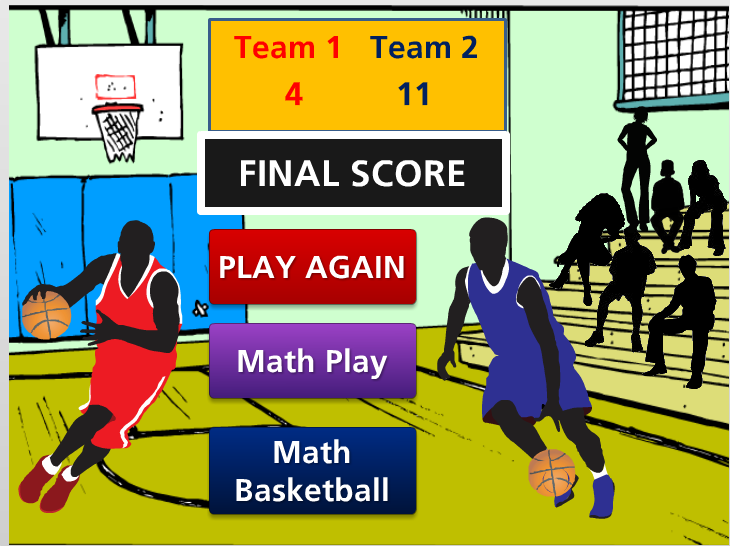
Pivot Lunge and Punch Through
We pivot a ton on the basketball court, so prepping your knees is key. This move is a simple pivot where you lunge your knee to the floor on each side and punch through with one hand for trunk rotation. Do this exercise for five to eight reps on each side or about 30 seconds
Leg Swing
Get your hamstrings and posterior chain ready for the extreme range of motion you’ll be doing during the game. Kick your leg up and touch it with the opposite hand. This will enhance your ability to sprint and jump on the court. Do five to eight reps on each side or about 30 seconds.
Up Drop
This works triple extension and prepares you for reaching the hoop. Bring your heels up off the floor, reach upwards with both hands — this pose is called triple extension — and then kick one foot behind you and drop towards the floor, working through the motion quickly on each side.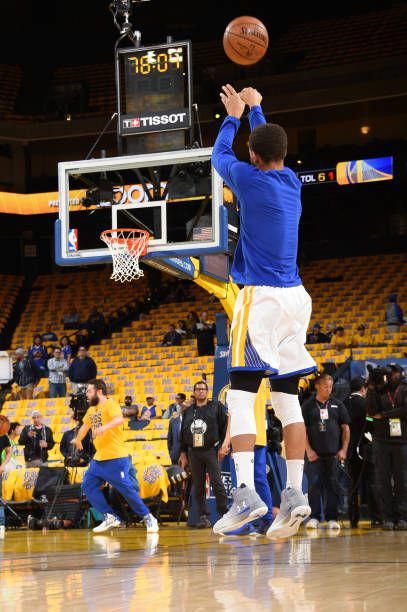 You guessed it: do five to eight reps on each side or about 30 seconds.
You guessed it: do five to eight reps on each side or about 30 seconds.
Up Drop and Jump
This basically advances the last move and helps you get that explosiveness while you play. Get up on your heels with your arms extended upwards and then jump up and then back down and land with bended knees. Do five to eight of these.
Up Drop and Skater Hop
Get up on triple extension and then jump to the other side and then restart. This gets you ready for big jumps as well as lateral movement. Do five to eight of these on each side.
Perri O. Blumberg
Perri is a New York City-born-and-based writer; she holds a bachelor's in psychology from Columbia University and is also a culinary school graduate of the plant-based Natural Gourmet Institute, which is now the Natural Gourmet Center at Institute Of Culinary Education. Her work has appeared in the New York Post, Men's Journal, Rolling Stone, Oprah Daily, Insider. com, Architectural Digest, Southern Living, and more. She's probably seen Dave Matthews Band in your hometown, and she'll never turn down a bloody mary. Learn more at VeganWhenSober.com.
com, Architectural Digest, Southern Living, and more. She's probably seen Dave Matthews Band in your hometown, and she'll never turn down a bloody mary. Learn more at VeganWhenSober.com.
How to warm up before a basketball game?
Playing basketball is a great psychophysical load combined with a well-conducted warm-up. The latter is also necessary in the context of reducing the risk of injury - whether it concerns an NBA player or amateur basketball players.
Warm-up without a ball
In the i-basket.ru basketball school, the coach always requires a warm-up before the game. As in volleyball, the warm-up before basketball is divided into two parts - with and without the ball. The transition directly to the game should only occur after the previous run and stretching, which for our joints and muscles is like lube for a bicycle. In most cases, a non-match warm-up begins with gentle steps in place that include hand and wrist stimulation. Continue warming up by doing steps in place, and then move on to easy running with knees up.
Warming up without a ball also involves moving forward and backward (changing direction, accelerating, etc.). During the warm-up, basketball players use a combination of running and twisting elements in the form of whirlwinds. This exercise is to reach the line, touch it with one hand and quickly change direction. This dynamic warming accent is also used by volleyball players.
To warm up without a ball, you need to add an element of movement in the shape of a basketball. These actions include elements of a low basketball stance and an aggressive change of direction. As for the stretching aspect of the warm-up, basketball players will not miss the classic T-movements with lateral extension.
Warm-up with the ball
After kneading the joints and muscles, you can safely start training with the ball. Some of them are similar to what you did without the ball. It is also important here to include a part of the ball control technique that each player implements and improves individually. It trains the coordination of movements very well.
It trains the coordination of movements very well.
Basketball warm-up starts with the left hand, then the right, and then start with direct, more intense changes of direction. The combination of stretching and working on the control of the basketball is very good preparation for the game. You can also add practice with your fingertips by flipping the ball from right to left over your head.
The warm-up items listed are only the key exercises in basketball craft. If you are interested in playing basketball in Moscow, then contact the IBASKET children's basketball school. The combinations and varieties used by professionals are much more diverse. Spending even a minute on the above actions will give you a significant advantage over an opponent who starts the game unprepared.
10/05/2017
Related posts
Fitness
Sport
Sport
Sport
Nutrition and health
Sport
Basketball methodological development “The impact of a special warm-up on the quality of the game”
Municipal entity
Leningradsky district
Municipal budgetary educational institution
19 secondary school No.

3
0040
named after D.K. Pavlogradsky
Village of Leningradskaya
municipality
Leningradsky district
Methodical development on basketball
Topic
“The impact of special warm -up on
9003 on the quality of the game”.
author: teacher of physical culture
MBOU secondary school № 13
named after D.K.0003
Kondratenko Vladimir Anatolyevich
Art. Leningradskaya, 2014
CONTENTS
-
Introduction
-
Relevance and substantiation of the topic.
-
General purpose: tasks, methods and forms of work.
-
State of the art in the literature.
-
Physiological warm-up mechanism.
-
Training warm-up.
-
Special part of the warm-up.
-
Basketball warm-up.
-
Game results.
-
Conclusions.
-
Literature.
INTRODUCTION
Basketball is one of the most popular youth sports. The best teams have been proving for years that they are on the right track for this game. This is evidenced by numerous prizes, medals won in major international competitions at the world championships, Europe, and the Olympic Games. It develops in a person such qualities as speed, dexterity, endurance, the ability to navigate in a difficult game environment. Basketball is a team game, but the current level of development of the game requires a basketball player to be able to play not only a team game, it requires the player to have high physical, technical, theoretical and moral-volitional training, so team training alone is not enough to achieve high results.
The high degree of development of modern basketball requires the maximum manifestation of the individual qualities of each player and the correct use of these qualities in the game. In order to successfully solve these problems, it is necessary to improve the training methodology and, in particular, the correct setting of the warm-up. Of great importance for the growth of a player as an athlete, as a future master, is individual training and the ability to properly warm up, that is, warm-up and individual training - this is a pedagogical process during which the skill of a player or the whole team is improved by an individual method.
Each training session, preparation for a match, a basketball player should start with a warm-up, a well-executed warm-up largely determines the successful fulfillment of the tasks set before training and successful participation in competitions.
In this methodological development, the issue of the influence of a special warm-up on the quality of the game is considered.
Warm-up is a set of specially selected exercises, consciously performed in order to prepare the body for the upcoming work. The warm-up accelerates the workability of the body, ensures the "entry" of the athlete into a working state, it creates an opportunity for the athlete to start the competition with a relatively high working capacity. Distinguish between general and special warm-up. The general part of the warm-up consists of various physical exercises, the task of the general warm-up is to prepare the athlete's muscles for the upcoming work, for this it includes exercises that affect muscle elasticity and improve flexibility in the joints. In the process of a general warm-up, conditions are created in the athlete's body for the splitting of oxygen from blood oxyhemoglobin and its entry into the muscles, which increases the blood supply to the muscles, and the minute volume of blood increases. The general part of the warm-up may consist of various exercises, not necessarily similar to the movements that will be in competition or in training, the duration of the general warm-up is 5-7 minutes.
The task of the general warm-up is to establish the regulation and mutual coordination of all the athlete's organs in conditions of maximum muscular activity.
The task of a special warm-up is to reproduce the movements that the athlete will need in the game, but these movements should not be carried out in standard exercises, that is, ball throws from close range, without interference from the opponent, but should be carried out taking into account the real opponent, that is, they should exercises are carried out with a constant change in conditions. A feature of the special warm-up is the game warm-up. Game warm-up helps to reduce the period of workability of the athlete's body, quick entry into the game. In order to determine the advantages of a game warm-up between teams of equal strength, games were arranged, before which they alternately carried out either a regular or a game warm-up. Usually, the warm-up consisted of a general part and game exercises, that is, such a scheme that was used in the practice of these teams. The game warm-up was carried out by compacting the general and special parts of the warm-up for 5-7 minutes, and the remaining 7-8 minutes were played on one backboard of two teams (on one half of the field) in compliance with the rules of the game, according to the principle: the ball owner attacks the ring . The duration of the warm-up in both cases was the same for the girls 12-15 minutes, but the result of the game was different, usually it affected the first 5-10 minutes and, as a rule, the team that conducted the game warm-up won.
The game warm-up was carried out by compacting the general and special parts of the warm-up for 5-7 minutes, and the remaining 7-8 minutes were played on one backboard of two teams (on one half of the field) in compliance with the rules of the game, according to the principle: the ball owner attacks the ring . The duration of the warm-up in both cases was the same for the girls 12-15 minutes, but the result of the game was different, usually it affected the first 5-10 minutes and, as a rule, the team that conducted the game warm-up won.
Naturally, the warm-up cannot always determine the general, and in some cases the initial period of the game, since it is not one of the training elements. To achieve high sports and technical results, other aspects of sports training are also of great importance: the general physical training of the team, high technical and tactical training, and the warm-up, as one of the training features, contributes to the manifestation of all the abilities of the athlete, but it cannot compensate for the individual weaknesses of the team or individual players.
RELEVANCE AND SUBSTANTIATION OF THE THEME
The relevance of this topic lies in the fact that not all of our teams, and especially the teams of grassroots teams, secondary specialized educational institutions, are able to properly warm up, basically the warm-up in these teams is of a general nature, not all players participate in the warm-up, which significantly affects the game of this team. Therefore, the question of the correct warm-up with its characteristic feature is relevant at the present time.
GENERAL PURPOSE, OBJECTIVES, METHODS, FORMS OF WORK
The general purpose of the work is a theoretical analysis of those literary sources that are available on the topic "Special warm-up of a basketball player."
Tasks:
1. To reveal the impact of the basketball player's special warm-up on the
training game, on the competition.
2.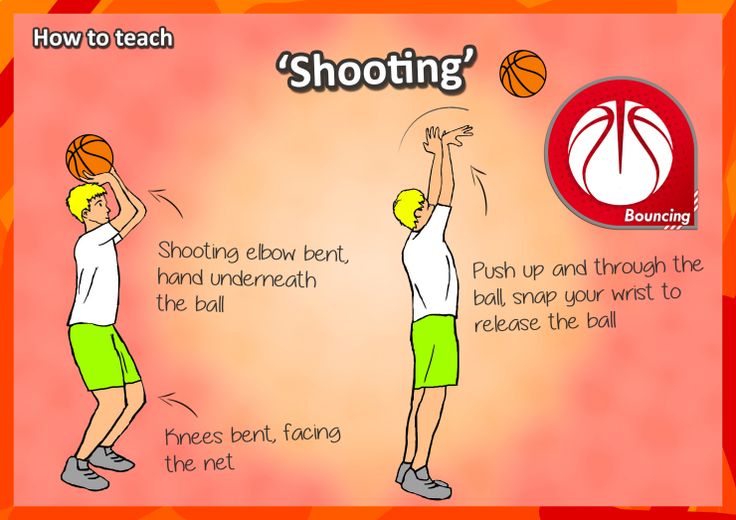 Compare the role of game warm-up with the general warm-up in basketball.
Compare the role of game warm-up with the general warm-up in basketball.
To use these goals and objectives, a review of the literature on this topic is used.
The main method and forms of work is a theoretical study of the available literature on this issue.
PHYSIOLOGICAL WARM-UP MECHANISM
Warm-up, as you know, is one of the necessary and important elements of training and sports competition, it accelerates the body's workability and ensures "the athlete's entry into working condition."
By reducing the run-in period, it is possible to start the competition with a relatively high work capacity. Distinguish between general and special warm-up. The influence of the general warm-up consists in strengthening the physiological functions with various exercises, the influence of the special warm-up is in the preparation of those functions, the strengthening of which is especially necessary in the upcoming competition.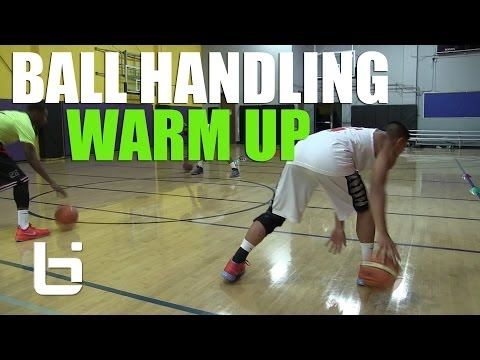 For this, physical exercises are used, which in their structure are close to the upcoming movements. The warm-up should prepare the muscles for the upcoming work, for this it includes exercises that affect the elasticity of the muscles, increasing their extensibility. Thus, an improvement in flexibility in the joints is achieved. When warming up, the temperature of the muscles rises, thereby reducing their viscosity and increasing the speed of chemical reactions occurring in them.
For this, physical exercises are used, which in their structure are close to the upcoming movements. The warm-up should prepare the muscles for the upcoming work, for this it includes exercises that affect the elasticity of the muscles, increasing their extensibility. Thus, an improvement in flexibility in the joints is achieved. When warming up, the temperature of the muscles rises, thereby reducing their viscosity and increasing the speed of chemical reactions occurring in them.
Favorable conditions are created for the splitting of oxygen from blood oxyhemoglobin and its entry into the muscles, they additionally open capillaries, which ensures increased blood supply to the muscles. There is a compression of the vessels of the spleen, liver, mobilization of deposited blood. Warm-up causes an increase in the minute volume of blood. Warm-up helps to prepare the respiratory system and its maximum activity.
The most important task of the warm-up is to establish the regulation and mutual coordination of the functions of respiration, circulation and movement in conditions of maximum muscle activity.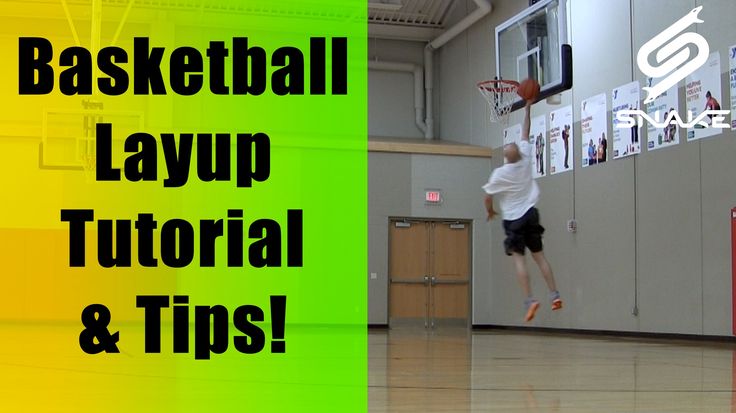 The general warm-up may consist of various exercises that do not have to be part of a movement competition. A special part of the warm-up should contain exactly these upcoming movements, it allows you to reproduce those skills that will be needed in the game.
The general warm-up may consist of various exercises that do not have to be part of a movement competition. A special part of the warm-up should contain exactly these upcoming movements, it allows you to reproduce those skills that will be needed in the game.
Therefore, before a basketball game, the warm-up must necessarily reflect the specific conditions of this game, so that the nature of the players' activities in the warm-up and the game will be the same, only in this case the greatest identity of the warm-up means with the subsequent activity can be achieved. In order to create optimal excitability and mobility of cortical processes in players, it is not enough to perform only certain technical techniques in a warm-up before a game in a predetermined sequence and under unchanging conditions. It is necessary that the warm-up exercises with their game character (presence of an opponent, constantly changing conditions, interactions of partners) determine the use by the players in one case or another (depending on the situation) of various techniques and actions both with the ball and without the ball.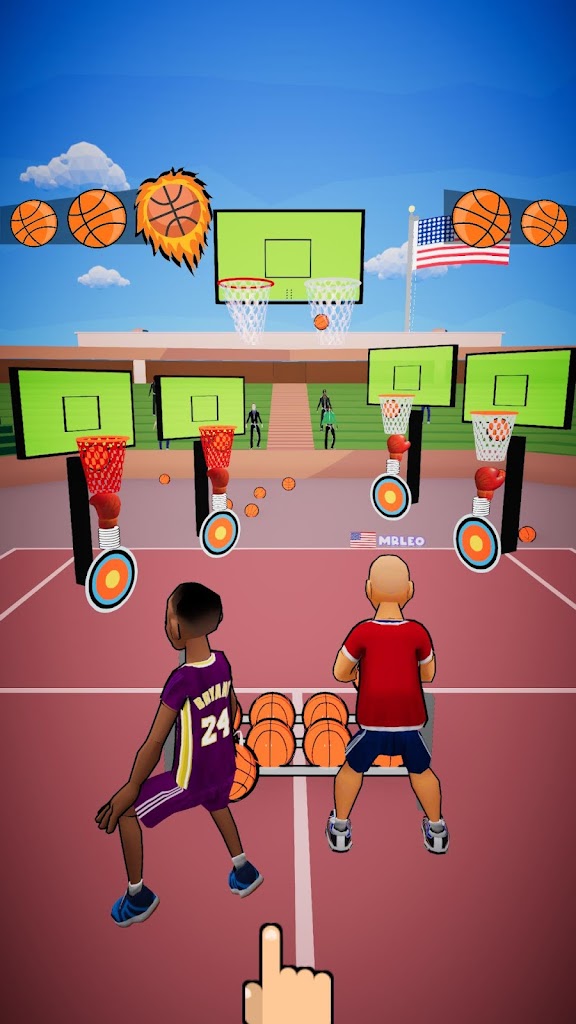 The participation of players in such a system of exercises will be a kind of activity similar to the game environment. In the process of this activity, in close connection with changes in the central nervous system, there will be changes in the functional state of the whole organism, this is extremely important, since an intense game of basketball places great demands on the work of internal organs and the motor apparatus.
The participation of players in such a system of exercises will be a kind of activity similar to the game environment. In the process of this activity, in close connection with changes in the central nervous system, there will be changes in the functional state of the whole organism, this is extremely important, since an intense game of basketball places great demands on the work of internal organs and the motor apparatus.
Based on the peculiarity of physical activity in the game (alternation of short jerks and stops, quick change of speed, nature of the direction of movement), the preparation of internal organs and the motor apparatus, along with general training, should also have a specifically physical character. In other words, the player, even realizing in a timely manner the need to perform this or that action, cannot instantly carry it out, which is extremely necessary in the process of gaming activity.
The preparation of the internal organs lies in the fact that the warm-up helps to increase the functionality in their activities in relation to the nature of the subsequent load.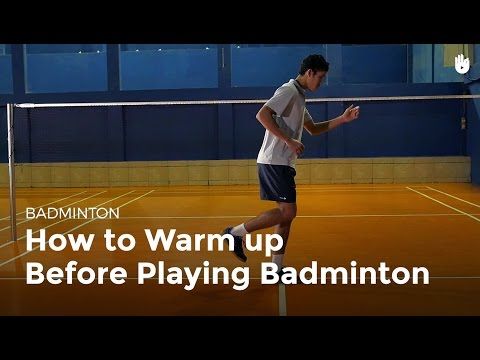 This phenomenon will be most beneficial when used consistently in the warm-up exercises without the ball and with the ball. At the same time, in the process of performing these exercises, further preparation of the player for activities in the game without the ball should take place, for example, the interaction of partners, the “holding” of the ward player, the release from the “guardianship” of the defender.
This phenomenon will be most beneficial when used consistently in the warm-up exercises without the ball and with the ball. At the same time, in the process of performing these exercises, further preparation of the player for activities in the game without the ball should take place, for example, the interaction of partners, the “holding” of the ward player, the release from the “guardianship” of the defender.
Specialized ball drills prepare participants for challenging off-ball and ball-play activities in a constantly changing environment. For the most complete preparation during the warm-up process for complex conscious and creative activity in the game, it is not enough just to mechanically perform even purely specific exercises. It is necessary that exercises reflecting the conditions and nature of game activity be applied, performed with a certain tactical purposefulness created by the coach’s verbal attitude, both for the team as a whole and for each player individually, and for the creative activity of the athletes themselves.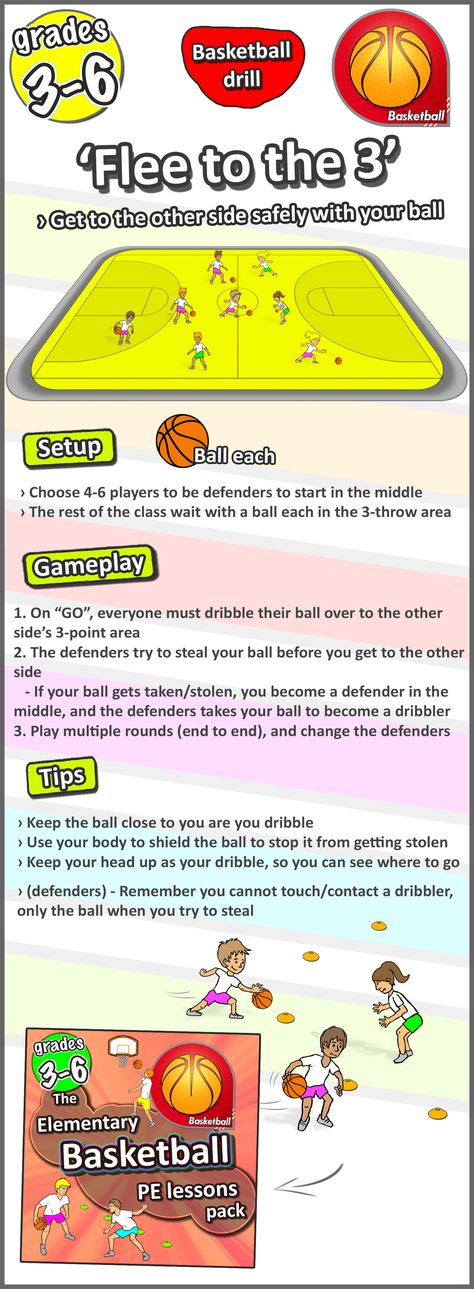 Considering the warm-up as a very important stage of the entire preparation for the competition, one cannot but take into account that it is carried out during the so-called starting state, characterized by certain changes in the functional state of the central nervous system and corresponding changes in the activity of the whole organism. These changes can be of a different nature and differ both in a moderate increase and, in certain cases, in an excessive increase or decrease in the excitability of the central nervous system. Varieties of the starting state are due to the common influence of various complexes of stimuli, both social and biological. These variations are the inevitable, ever-changing bottom on which to warm up before a competition. The effect of the warm-up will not be different depending on one or another starting state, which in turn is determined by the type of nervous activity and specific external and internal conditions. Therefore, the warm-up should vary depending on the specific situation and the condition of the player.
Considering the warm-up as a very important stage of the entire preparation for the competition, one cannot but take into account that it is carried out during the so-called starting state, characterized by certain changes in the functional state of the central nervous system and corresponding changes in the activity of the whole organism. These changes can be of a different nature and differ both in a moderate increase and, in certain cases, in an excessive increase or decrease in the excitability of the central nervous system. Varieties of the starting state are due to the common influence of various complexes of stimuli, both social and biological. These variations are the inevitable, ever-changing bottom on which to warm up before a competition. The effect of the warm-up will not be different depending on one or another starting state, which in turn is determined by the type of nervous activity and specific external and internal conditions. Therefore, the warm-up should vary depending on the specific situation and the condition of the player.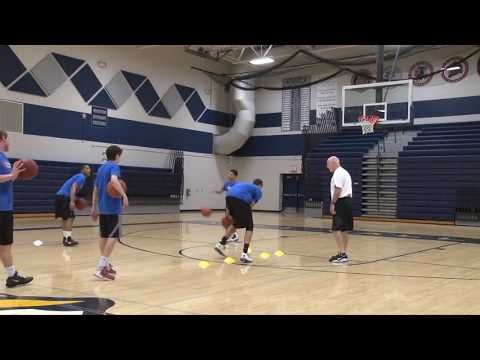 In order for the required changes to occur in the activity of the whole organism, it is necessary to perform exercises for a certain time, which is spent on the workability of the organism.
In order for the required changes to occur in the activity of the whole organism, it is necessary to perform exercises for a certain time, which is spent on the workability of the organism.
Physical activity in playing basketball is characterized by the fact that for a long period of time the maximum speed of movement is required, alternating with minor breaks, the game requires great endurance from the participants, which allows maintaining the maximum speed of jerks throughout the competition. Based on research, it has been established that the duration of the warm-up for adult teams should be at least 15 minutes. At the same time, it must be assumed that the duration of the warm-up depends on the number of games per day, on the characteristics of the player's body. But the trouble is that not everyone knows how to warm up on their own, they do not always pay serious attention to the warm-up. Usually those 5 players who start the game are well prepared for the game and do the warm-up, while the rest do it reluctantly, because they think that they will still sit on the “bench” and “cool down”.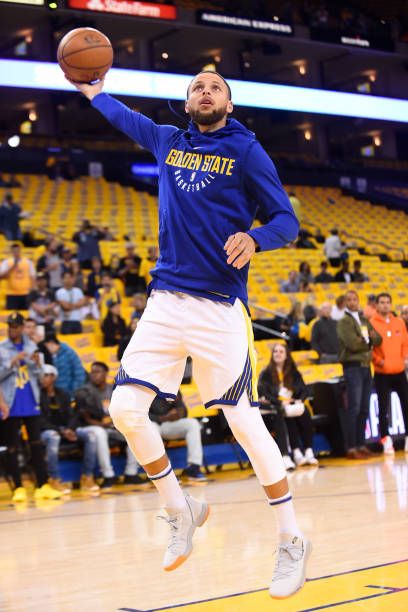 This point of view is erroneous and not correct. Those players who have not warmed up well often make many mistakes in the game, and sometimes get injured.
This point of view is erroneous and not correct. Those players who have not warmed up well often make many mistakes in the game, and sometimes get injured.
A basketball player who has done a good warm-up before a game actively follows the game and worries about his team. He is ready at any moment to enter the game without a big long warm-up during the whole half. During the break between halves, players who did not participate in the game, or who participated in it a little, definitely need to warm up additionally, it is often possible to observe how during the competition, when there are several games a day, the players warm up - this is not advisable, since forces are wasted aimlessly before next game. Basketball players of the highest ranks and in training sometimes warm up on their own, so every basketball player should know well how to warm up.
TRAINING WARM-UP
Warm-up is a set of specially selected physical exercises, consciously performed by an athlete to prepare the body for the upcoming work.
Given the great pedagogical, psychological significance of a well-organized warm-up, the warm-up below can be considered the most appropriate.
General part of the warm-up (exercise without a ball), individual exercises consisting of slow and fast running, alternating movements of arms, trunk, legs, various jumps, running with stops, turns and changes in direction and nature of movement.
Exercises are performed by each player independently under the supervision of a coach, in an arbitrary combination at a gradually increasing pace, in the dosage required for each. Collective exercises in which jerks alternate with stops, turns, and changes in direction of movement.
-
Those warming up move in a circle, running at an average pace at a distance of 2-3 meters, on a signal (raising their arms) they perform a jerk forward, trying to catch up with the one running in front, turning around and continuing to run at an average pace in the opposite direction.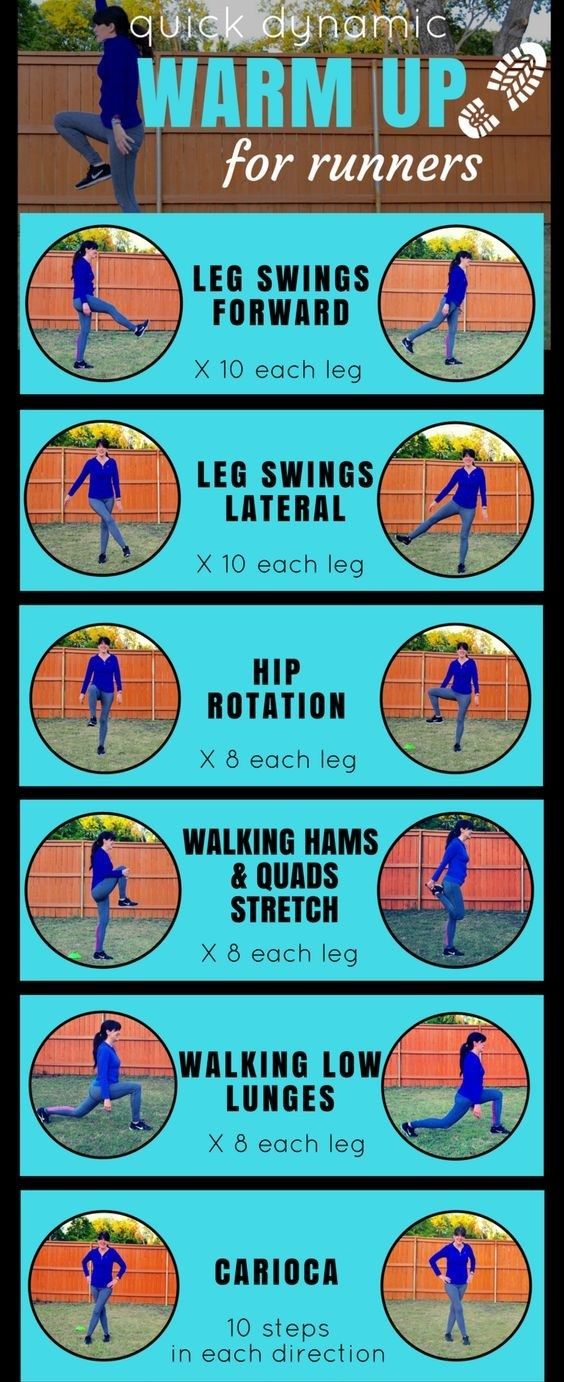
-
The warm-ups are divided into two groups: the first group, on command, performs a dash from the front line to the center line - stop and turn, then a dash from the free-throw line, stop and turn, followed by a dash to the starting position, the second group starts moving along the second signal given a little later and tries to follow the same path to catch up with the first group.
3. The warm-ups are located at the starting position in pairs so that when running on the spot, jumping or squatting on a task, one participant from each pair is approximately two meters ahead of the second at the signal (raise of the arm) given unexpectedly, those in front must run as quickly as possible to the previously indicated place, the rest will catch up with them.
If a second signal (whistle) was given during the movement, then the one who was catching up should abruptly change direction (moving in the opposite direction) and run away to the starting position, and the one who was running away should catch up with him.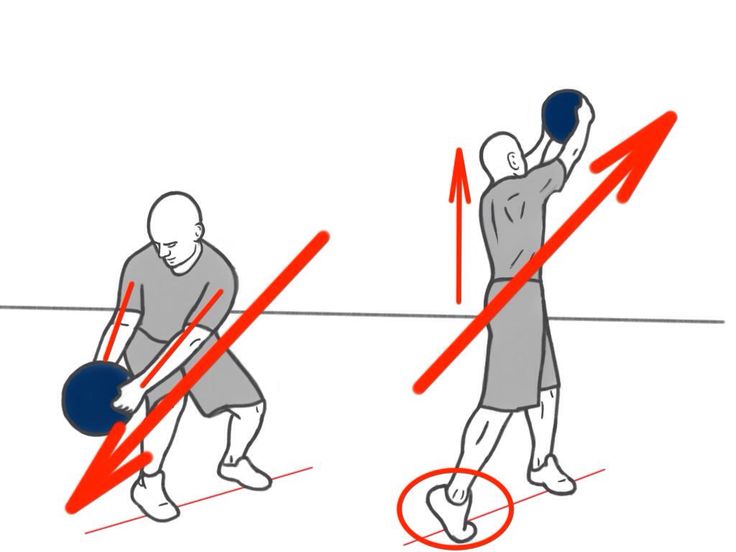 You can also apply other proposals drawn up by the coach in relation to his team, taking into account the nature of movement during the game.
You can also apply other proposals drawn up by the coach in relation to his team, taking into account the nature of movement during the game.
Special exercises in pairs:
1. One player is a defender, the other is an attacker. The attacker, using false actions, jerks, stops and turns, tries to get rid of the defender and go to a free place: the defender tries to respond in a timely manner to the actions of the attacking player, making it difficult for him to get to the free place, after a certain time the players change roles.
2. Game of tags “in pairs”. Moving in a characteristic stance for the game, the evader tries, using false actions, short jerks and quick stops with a sudden change in direction of movement, jumps trying to get away from the player who is catching up with him, as soon as the leading player “stains” the evader, they change roles.
Special exercises in threes:
1. Two players are forwards, one is a defender. One of the attackers, using false actions, jerks, stops, tries to direct the defender at his partner, using him as a barrier, providing an unhindered exit to a free place; the attacker actively helps his partner. After a certain time, the players change roles.
Two players are forwards, one is a defender. One of the attackers, using false actions, jerks, stops, tries to direct the defender at his partner, using him as a barrier, providing an unhindered exit to a free place; the attacker actively helps his partner. After a certain time, the players change roles.
2. A game of "fifteen" in threes. One player catches up - the second runs away from him, trying not to be "stained", the third player, covering the escaping, interferes with the actions of the leading player.
Special group drills:
1. One team is attacking, the other is defending a certain area. The players of the attacking team, acting together, try (thanks to oncoming movements, organization of barriers) to lead their players to an empty place, freeing them from the guardianship of the defenders. The players of the defending team, initially playing defense against a certain player, also act in direct relationship with each other, switching at the right moment to hold other players; in this case, the main attention is paid to the player who at the right time is the most dangerous.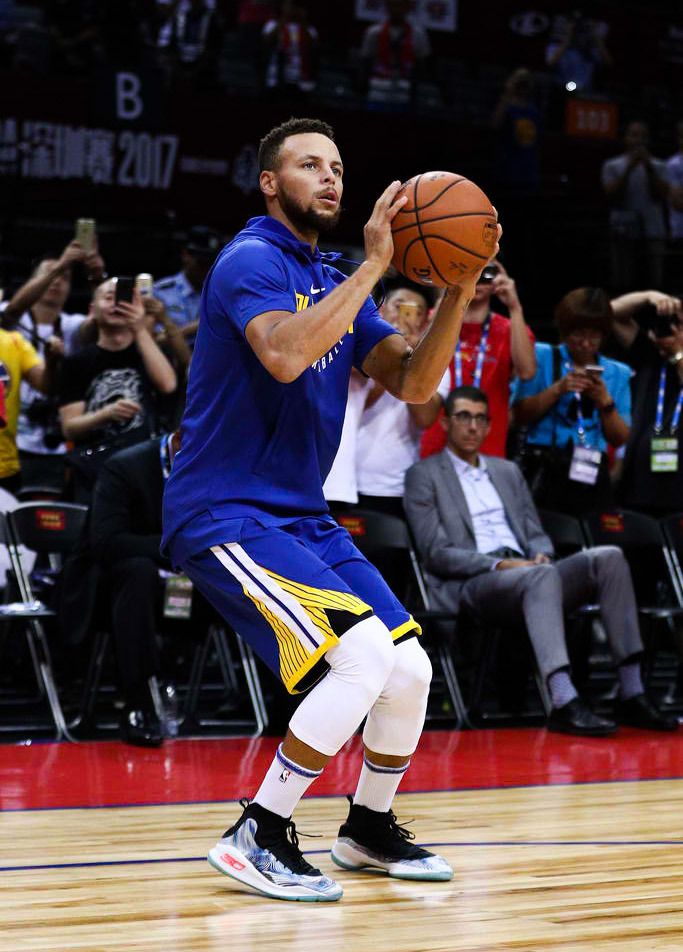 It is advisable to carry out this exercise on one half of the field, where the defending team is trying not to let free players to the backboard. After a certain time, the teams switch roles.
It is advisable to carry out this exercise on one half of the field, where the defending team is trying not to let free players to the backboard. After a certain time, the teams switch roles.
2. Group “fifteen”, the players are divided into two groups. Members of one group are runaways. Each player of the leading team has the right to "stain" only one player from the team that runs away; evaders try to get away, using both their partners and opponents as a barrier. In addition, they try to actively help their partners run away from the players who “spot” them. The players of the catching up team, in turn, must not only “tarnish” the player, but also help their teammates with their actions.
SPECIAL WARM-UP
Ball exercises.
1. Passing the ball in a circle in any direction in any direction. Warm-ups are divided into two groups. One (which has more players) forms a circle. Players pass the ball in any way in various directions, independently moving to the right and left in a circle only within 2-3 meters.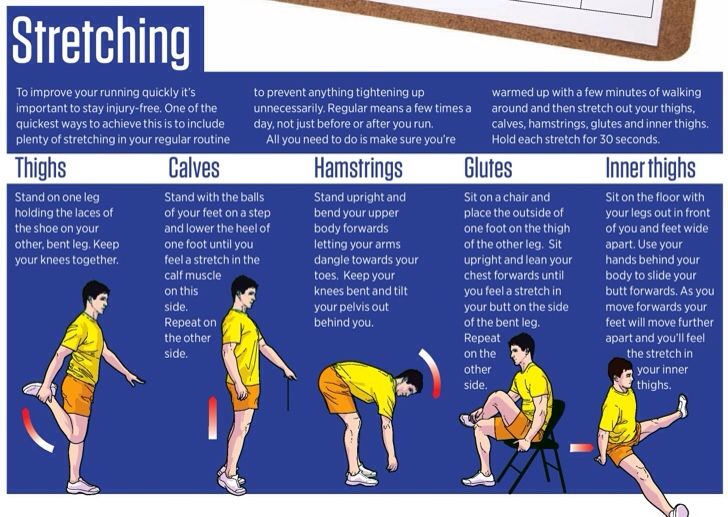 The players of the second group, moving inside the circle in any direction, try to intercept the ball. When the team playing in the circle has taken possession of the ball, the teams change roles.
The players of the second group, moving inside the circle in any direction, try to intercept the ball. When the team playing in the circle has taken possession of the ball, the teams change roles.
2. Passing the ball in any direction in any direction with or without dribbling by equal teams. The team in possession of the ball, using its technical and tactical capabilities, tries to keep the ball as long as possible without errors. If the players of that team make a mistake or the ball is intercepted by another team, the teams change places. Each player of the team that plays defense "holds" a certain player of the other team.
3. Throwing the ball into the basket in an arbitrary way from various distances with resistance from the defender. The player throwing the ball into the basket runs to any free place to receive the ball and, depending on the actions of the defender, makes a throw into the basket from a distance or beats the defender, passing under the backboard.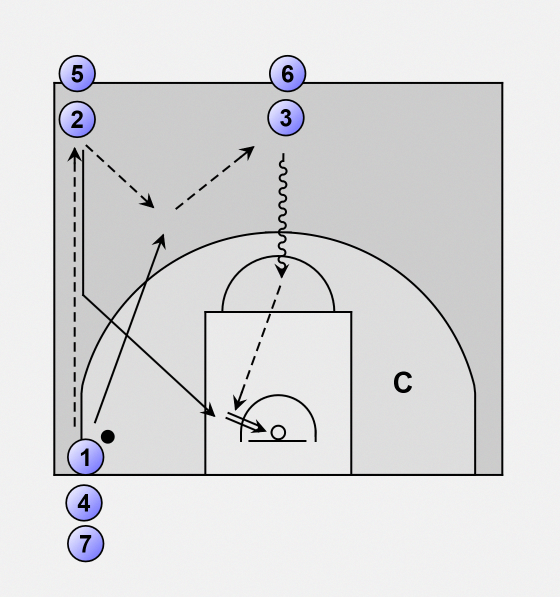 After the throw, both players try to catch the ball bouncing off the shield. The player who catches the ball from the shield becomes the attacker and, having passed the ball to the next player who finds it for the throw, goes to the starting position for the next exit. Players who do not catch the ball become defenders. Defenders must actively, but correctly, without personal errors, intervene in the actions of the attacking player and try to take possession of the ball, if the defender makes a personal error, then the attacker is given the right to re-take the throw. If an attacker commits a personal error, then no matter who catches the ball from the backboard, he becomes a defender. In other cases, you can simply change the roles of the participants (the defender picks up the ball after the throw and passes it to the next player; the one who just made the throw becomes the defender).
After the throw, both players try to catch the ball bouncing off the shield. The player who catches the ball from the shield becomes the attacker and, having passed the ball to the next player who finds it for the throw, goes to the starting position for the next exit. Players who do not catch the ball become defenders. Defenders must actively, but correctly, without personal errors, intervene in the actions of the attacking player and try to take possession of the ball, if the defender makes a personal error, then the attacker is given the right to re-take the throw. If an attacker commits a personal error, then no matter who catches the ball from the backboard, he becomes a defender. In other cases, you can simply change the roles of the participants (the defender picks up the ball after the throw and passes it to the next player; the one who just made the throw becomes the defender).
4. Throwing the ball into the basket in an arbitrary manner after a play between two attackers against one defender.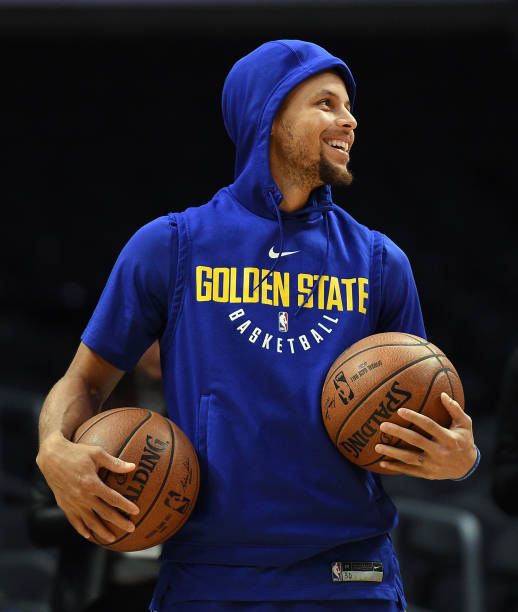 Throw in the basket is made by the player who is in a better position. Each pair alternately participates in the exercise until the ball hits the basket without making mistakes. The player who puts the ball into the basket becomes the defender. The player, who was the defender, with his partner goes to the starting position to start the exercise.
Throw in the basket is made by the player who is in a better position. Each pair alternately participates in the exercise until the ball hits the basket without making mistakes. The player who puts the ball into the basket becomes the defender. The player, who was the defender, with his partner goes to the starting position to start the exercise.
5. Playing in one basket of two equal teams, observing the basic rules of the game of basketball and fulfilling the following conditions:
a) the game is played in one half of the field, starts with a kick-off on the free-throw line,
b) the team in possession of the ball attacks, the other team defends the basket. The team throws the ball from behind the end line to the middle line and only after that starts attacking the basket,
c) when throwing into the basket, if the ball did not hit it, only the players of the attacking team have the right to throw again, the players of the defending team must after take possession of the ball bouncing off the backboard, pass it back and then start the attack,
d) personal errors of the players in all cases are punished with a free throw (to seal the time). If the ball does not hit the basket, the players of the team that made the free throw can immediately attack it a second time. The other team must take possession of the ball, make a pass to the middle line and then start the attack. Depending on the specific conditions (the number of people warming up, their readiness, the conditions for warming up). The game can be played by teams: 3 - against three, 4 - against four, 5 - against five. When playing with incomplete squads, one should be attentive to the composition of teams, based on the interactions of the team players in general, as well as their tasks that are assigned to each player in this meeting. When playing with full squads, those entering the competition from the very beginning make up one team, substitute players - the second. Before each competition, the warm-up of the players must begin with various individual exercises. Then one collective exercise is performed in snatches with stops, turns, change of direction of movement and one or two exercises from those performed in pairs, triples or group.
If the ball does not hit the basket, the players of the team that made the free throw can immediately attack it a second time. The other team must take possession of the ball, make a pass to the middle line and then start the attack. Depending on the specific conditions (the number of people warming up, their readiness, the conditions for warming up). The game can be played by teams: 3 - against three, 4 - against four, 5 - against five. When playing with incomplete squads, one should be attentive to the composition of teams, based on the interactions of the team players in general, as well as their tasks that are assigned to each player in this meeting. When playing with full squads, those entering the competition from the very beginning make up one team, substitute players - the second. Before each competition, the warm-up of the players must begin with various individual exercises. Then one collective exercise is performed in snatches with stops, turns, change of direction of movement and one or two exercises from those performed in pairs, triples or group. The special part begins with the performance of one of the exercises in passing the ball, then one or two exercises in throws into the basket and ends with the game of one basket by two teams.
The special part begins with the performance of one of the exercises in passing the ball, then one or two exercises in throws into the basket and ends with the game of one basket by two teams.
All exercises are performed at different intensities and dosages for specific players under the guidance of a coach. Of the total duration of the warm-up, about one to two minutes are allotted for short breaks between individual exercises. The duration of the general part is approximately five minutes, the special part is 9-10 minutes. At the games of two teams in one basket each time it is necessary to allocate 4-5 minutes. Each exercise is carried out mainly in a competitive order with a specific task, this is especially important in the exercises of the special part and in the game in one basket. Under good warm-up conditions (fields for the game, at least two balls per team), all 10 team members warm up before the start of the game, this will ensure greater team cohesion, the readiness of any player to enter the field in case of unexpected substitutions at the beginning of the game and a more complete the last exercise in the warm-up.
However, it should be taken into account that this warm-up will not be effective enough for players entering the competition even in the middle of the first half of the game. Therefore, one or two players who are likely to enter the field in the near future should continue to warm up with the ball after the start of the game. Players who entered the game after a long time must do an additional warm-up before leaving, in this case, if the substitute players are not given the opportunity to participate in this meeting, then the warm-up done before the game will still be a kind of training for them, especially important during long competitions .
If warm-up conditions are unfavorable (insufficient space, few balls) or it is necessary to preserve the strength of players who do not enter at the beginning of the competition, the warm-up before the start of the game is carried out by five players entering the competition from the very beginning or one or two substitutes, exit which is most possible when replacing.
GAME WARM-UP IN BASKETBALL
As you know, warm-up is one of the most important elements of training and sports competition, it speeds up the development of the body and ensures that the athlete enters the working state. Due to the reduction of the working-in period, it is possible to start the competition with a relatively high working capacity. The effectiveness of the warm-up is confirmed by practice and experimentally.
Cited by Starorusskaya Z.N. Observations on the championship of Russia among older girls showed that most of our teams adhere to a certain warm-up scheme. The warm-up they conduct consists of a general part (various physical exercises for 5-7 minutes and special game elements), throws on the ring for 5-8 minutes. It should be noted that our teams do not use any specific warm-up methodology. Often the warm-up consists of a variety of shots around the ring, or vice versa, includes only the general part. The duration of the warm-up for different teams is from 7 to 3 minutes, the intervals between the end of the warm-up and the start of the game are from two to three minutes, five to seven minutes.
In essence, the warm-ups currently conducted by most of our basketball teams are almost the same as the warm-ups that were conducted 10 to 15 years ago.
At the present time, in connection with the increase in the class of our basketball players, there is a need to improve the existing warm-up methodology, which would be based on a scientific understanding of the physiological mechanism of warm-up. In order to determine the advantage of a game warm-up between teams of approximately equal strength, needles were arranged, in front of which they alternately carried out either a regular or a game warm-up. The warm-up usually carried out consisted of a general part and special game exercises, i.e. such a scheme that was used in practice by these teams. The game warm-up was carried out as follows: due to the compaction of the time of the general and special parts, the subsequent game was played on one backboard of two teams (on one half of the field) in compliance with the rules of the game, according to the principle: the team in possession of the ball attacks the ring. The game, conducted under the direct supervision of the coach, began at a relatively slow pace, close to the pace of a normal game. The duration of the warm-up in both cases was the same, for boys 15-17 minutes, for girls 12-15 minutes (of which the game accounted for 5-8 minutes).
The game, conducted under the direct supervision of the coach, began at a relatively slow pace, close to the pace of a normal game. The duration of the warm-up in both cases was the same, for boys 15-17 minutes, for girls 12-15 minutes (of which the game accounted for 5-8 minutes).
The analysis of the game showed that the teams, when they warm up, play better than when they use the usual warm-up. At the same time, the teams after the game warm-up play better than the opponent after the usual warm-up. The advantage of the game warm-up is especially in the first 5-10 minutes of the game and in most cases the meeting ended with the victory of the team conducting the game warm-up in advance.
GAME RESULTS IN TRAINING GAMES
The team after the game warm-up started the game better than the opponent and in most cases during the first 6 minutes they were the full owners of the site. From the first minutes they established a combination game, attacked the basket more often, the percentage of hits reached 70-75%, there were fewer ball losses during shots into the basket. The score for the first 6 minutes of the game in 7 cases was in favor of the team that conducted the first warm-up, in one case it was a draw and in two cases it was not in favor of this team. The overall result of the games showed 7 wins and 3 losses.
The score for the first 6 minutes of the game in 7 cases was in favor of the team that conducted the first warm-up, in one case it was a draw and in two cases it was not in favor of this team. The overall result of the games showed 7 wins and 3 losses.
The results of the games showed that during the game warm-up in the conditions of training games, calendar meetings, the team shows a better game than the team that performed the general warm-up.
Naturally, the warm-up cannot always determine the general, and in some cases even the initial period of the game, since it is only one of the elements of training.
To achieve high sports and technical results, other aspects of sports training are also important: general physical training of the team, high technical and tactical training. A warm-up can contribute to the manifestation of all the abilities of an athlete acquired during the training, but not to compensate for individual weaknesses in the preparation of players.
As you know, in basketball, one of the decisive elements of the game is the final throw on the basket. Recordings of the games showed that the teams, having warmed up for 5-10 minutes, played more actively, outplayed the opponent, created the opportunity to pass and throw the ball from a closer distance. Basket throws ended with a hit due to the fact that they were tactically sound, and this facilitated their technical execution. After the game warm-up, the players attacked the ring more often, they had fewer ball losses during the preparation of the attack, and most importantly, the technical combinations ended with a productive throw.
It is known from basketball practice that when a player is replaced, a new player, even after a warm-up, cannot immediately enter the game, since this was not preceded by a game warm-up, therefore, after a game warm-up, the team essentially does not start the game, but, as it were, continues it, those. enter from game to game, while the opponent has to enter the game for 5-6 minutes in order to “play out”.
Conclusion .
1. The warm-up in basketball must become an integral part of each competition, carried out according to a certain plan known in advance to the athletes.
2. The significance of the warm-up should be considered primarily from the point of view of its influence on the activity of the central nervous system, which ensures changes in the activity of the whole organism.
3. The most complete comprehensive preparation for successful activity from the first minutes of playing basketball takes place during the warm-up process, which consists of general, special parts, which in their content are closest to the features of this game activity.
4. Warm-up exercises that correspond to game activity according to the conditions, and in connection with this and the nature of physical activity, provide a more complete preparation of the athletes' body to perform specific stresses in the game.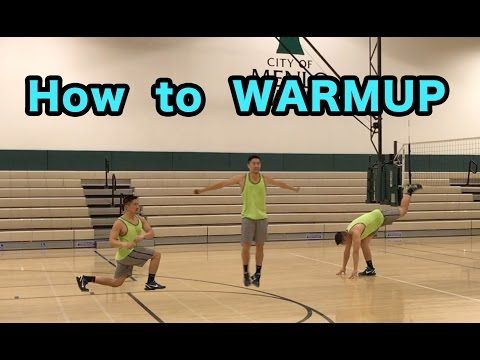
5. For more effective comprehensive preparation for game activity, it is necessary that game exercises during the warm-up process be performed with a certain technical focus.
6. Before each competition, the player's warm-up must begin with various individual drills.
7. After the game warm-up in the initial period of the game, the teams attack the opponent's ring more often and more effectively, lose the ball less due to technical errors during the preparation of the attack, create favorable conditions for playing the game and win it for the most part.
8. Game warm-up significantly reduces the latent period of the motor reaction, as well as the limits of its fluctuations, which indicates the creation in the cortex of the cerebral hemispheres of a state of excitability corresponding to this game activity.
9. The use of game warm-up in the practice of competitions has shown that it ensures the entry of players, and most importantly the team as a whole, into the game from the first minutes of the start of the competition.